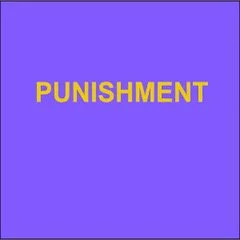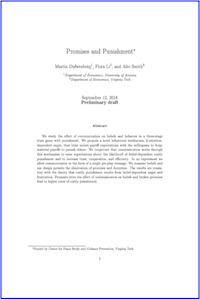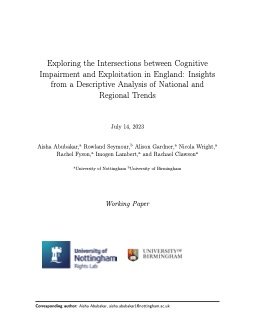By Melissa Serafin, Julie Atella, Piere Washington, Sophak Mom
Reentry and community context Within three years of release from state prisons, federal prisons, and local jails, about half of people are reincarcerated and two-thirds are rearrested (Office of the Assistance Secretary for Planning and Evaluation, n.d.). Existing research highlights how challenges to reentry are compounded in rural communities because they are often underserved and under-resourced. Employment, housing, transportation, and limited social and health services are all common barriers for individuals reentering rural communities, and access to reentry programming is often limited (Benavides et al., 2023; Ward et al., 2016; Ward, 2017; Zajac et al., 2014). Additionally, the opioid crisis has significantly impacted rural communities, including those in Maine (Maine Governor’s Office of Policy Innovation and the Future, 2023). The rate of overdose fatalities in Maine increased from 0.3 per 1,000 population in January 2017 to 0.6 in January 2022, and the rate in Waldo County also increased from 0.2 in 2017 (8 total) to 0.5 in 2022 (20 total; Maine Drug Data Hub, 2024). Overdose fatalities most notably increased during the COVID-19 pandemic: the fatality rate in Maine increased 33% between 2019 and 2020, with 83% of deaths in 2020 due to opioids. Without opportunities, resources, and support, people reentering rural communities may experience hopelessness and criminogenic needs contributing to recidivism (Ward, 2017; Pettus-Davis & Kennedy, 2019). The findings from the current project also identified many of these challenges. Limited access to and availability of resources and services like internet, public transportation, health care and insurance, employment options, and affordable housing across counties and the state were stressed as barriers hindering the success of the program. Housing was identified as a particularly significant challenge, and this is compounded by the lack of viable employment options that provide a livable wage. The median cost for a studio efficiency or one-bedroom apartment in Waldo County, Maine in 2023 was $916-$922, and a two bedroom was $1,174 per month (RentData, 2024). According to the Maine Department of Labor (2024), the minimum wage in 2023 was $13.80 per hour in the state. Individuals employed full time, earning minimum wage, and who rent at least a studio efficiency would then be considered “cost-burdened”1 or “severely cost-burdened”2 (Office of Housing and Urban Development, 2014). Rent burden contributes to lacking the means to afford other necessities such as food, clothing, child care and more. Furthermore, the National Low Income Housing Coalition (NLIHC, 2024) notes the extreme shortage of rentals that are affordable to households whose incomes are at or below the poverty guideline or 30% of their area median income. In addition to the shortage of affordable housing and within the vicinity of the VOANNE network—within a four-city radius—there were no homeless shelters, nor mental health facilities with detox beds, and only one sober house. While VOANNE provides tents and camp supplies in more dire cases, and connects some participants with temporary transitional housing (including motels), they have access to very few permanent housing supports. Experiencing housing insecurity and homelessness can also negatively impact substance use. For example, efforts to stay awake to protect belongings and avoid violence is associated with developing and worsening substance use disorders (Mehtani et al., 2023). Existing research and findings from the current evaluation indicate that transportation is often a significant challenge for individuals reentering rural communities (Benavides et al., 2023; Ward, 2017; Zajac et al., 2014). While Maine does have some public transportation, rural areas have limited public transportation. Some communities have fixed route bus services that do not operate 24 hours a day and seven days a week, but these may only be in some counties (Eichacker, 2021). Limited public transportation means limited independence upon reentry to get to and from places like the DMV, a job interview, or to work. Additionally, some participants in the current evaluation did not possess driver’s licenses, further limiting their transportation options. This evaluation also identified how lack of phone service and high-speed internet make communication difficult and pose a barrier to building independence and integrating into society. Previous research has also identified these as significant reentry barriers (PettusDavis et al., 2019). Correctional system initiatives In response to the challenges that individuals face while reentering their communities, VOANNE and their partners have implemented several initiatives. Specifically, VOANNE has prioritized building trusting and collaborative partnerships with law enforcement agencies; this evaluation identified the strength of these partnerships. These partnerships facilitate opportunities to strengthen impact, such as the ability to provide services and programming within county jails while individuals are incarcerated. Additionally, postrelease offices and community spaces provide critical support to individuals who are reentering their communities after incarceration, and VOA’s diversion programming allows VOANNE to serve anyone who could benefit from services (e.g., not just individuals who are or have been incarcerated). VOANNE has also been able to expand to providing services in additional counties and correctional facilities over time.
St. Paul, MN: Wilder Research, 2024. 43p.





















